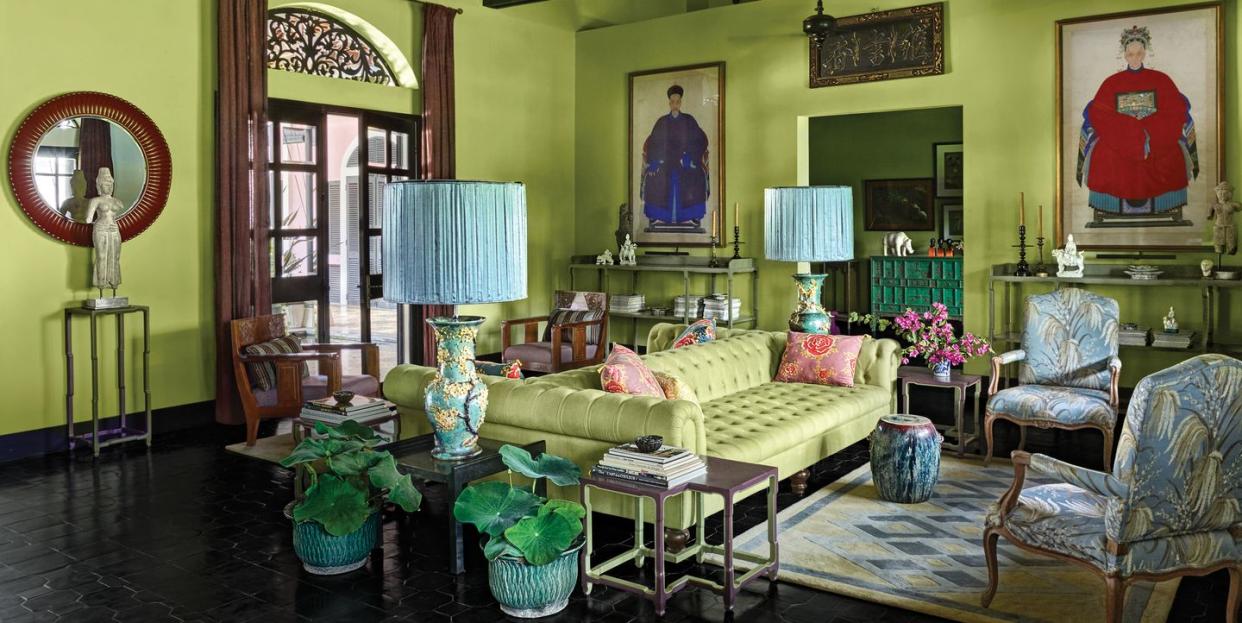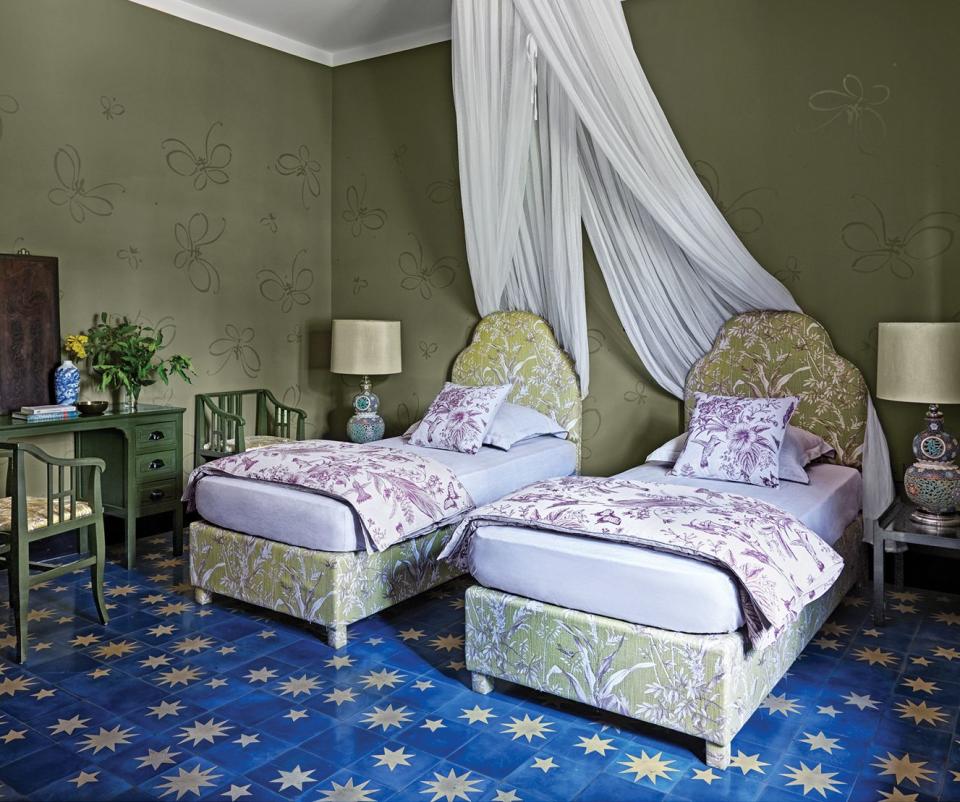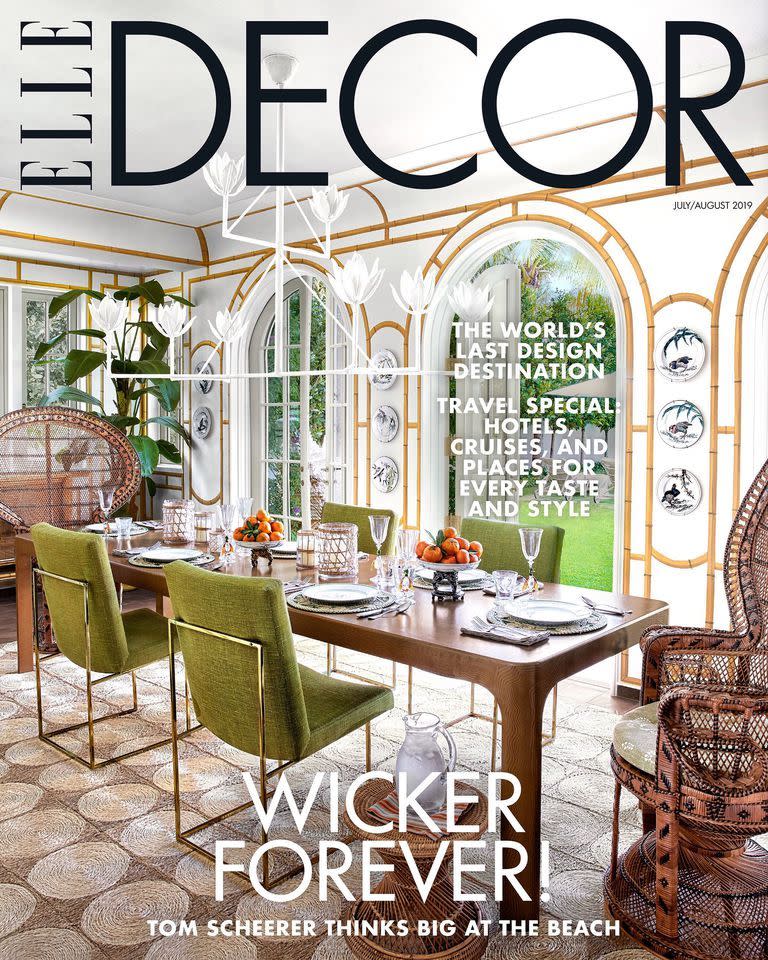Tour a Gorgeous Tropical Getaway in the Vietnam Countryside

Lacquerwork is one of Vietnam’s oldest art forms, dating back thousands of years. The ancient technique is what initially brought French interior architect and decorator Bruno de Caumont to Vietnam, first as a visitor and then as a permanent resident of Ho Chi Minh City, where his luxe collection of vividly lacquered furniture—inspired by the 18th-century Directoire period, a favorite of this former Parisian antiques dealer—is still painstakingly fabricated by local artisans.
In a lovely reversal of roles, as de Caumont looked to his new home for inspiration and craftsmanship, several local connoisseurs began to look to the debonair designer—a descendant of Ange Jacques Gabriel, the architect of Paris’s Place de la Concorde—for his expertise in, of all things, authentic Vietnamese decor. A prominent physician, Chanh Tran Tien, and his wife, Trang, enlisted de Caumont to renovate a property in Ho Chi Minh City’s countryside after paying a visit to La Villa Verte, the designer’s home and studio in town, where the rooms are splashed in mod hues like hot pink and kelly green and decorated with his chromatic collections of furniture, rugs, and encaustic tiles, all made in nearby factories. “When everyone was doing black-and-white rooms, it was very painful for me,” the designer says. “It’s the most impersonal design. Color reveals who you really are.”

The house, which was built in the 1990s and abandoned about a decade ago, was in a sad state when it was purchased in 2014. The straw roof had collapsed, damaging the interiors; grass and weeds had spread from the garden onto the veranda; and a small pool sat neglected. Transforming the property into a quietly stunning, welcoming retreat would be no small feat. “They wanted a home that looked like it had been in the family forever,” de Caumont recalls. “There is nothing I didn’t design in the house, even the door handles.”
To achieve an air of authentic antiquity, de Caumont started where all good students of the decorative arts should begin: in the public library, where he pored over books and photographs of historic Vietnamese interiors. “I began to understand the mix that exists here of 19th-century French architecture and the Asian style of Art Deco furniture, which is a little more Rococo,” he explains.
He focused on creating an environment that was all about the feeling of living outdoors. What was once a small, squat structure has been reimagined into an airy one-story, six-bedroom residence that forms a U shape with a 65-foot lap pool at its center. “As soon as you walk in the front door, you see through to the pool and feel almost obliged to go outside,” de Caumont says. “There’s no reason to stay inside a house like this.”
He wanted the interiors to look “old but maintained, as if everything was there for generations.” The faded tropical hues on the walls were achieved with chalk paint, a traditional technique that prevents streak marks in Vietnam’s persistent humidity. While the veranda’s vintage floor tiles are original, other rooms have fanciful encaustic tiles of de Caumont’s own design, from a vivid star pattern to an artful red motif based on a 19th-century French design. He scoured Vietnamese antiques shops for choice finds, such as a guest room’s ornate gilded four-poster bed and a seven-panel lacquered screen in the master bath, but otherwise furnished the rooms with his own flamboyant pieces. Meanwhile, de Caumont made almost every lamp in the house by topping local market vases with silk shades.

Perhaps the most striking design element is overhead: a ceiling crafted in white oak to resemble the hull of a ship, from which a dozen fans stir the air. Like all of the home’s woodwork, it is lacquered black—a surface treatment that, by the way, repels termites and other damaging insects, which is why it has been used for centuries throughout Southeast Asia.
Since the completion of the house in 2016, high-rise apartment buildings have been sprouting up in Ho Chi Minh City and the surrounding countryside as quickly as weeds; they tout such luxuries as marble flooring, crystal chandeliers, and ice-cold air-conditioning to eradicate the tropical heat. By contrast, de Caumont aspires to a simpler aesthetic, one in which, he says, “you understand perfectly where you are living—it feels good, and you don’t need more.”
He continues: “My mother, when she used to cut my hair, would say, ‘You need to suffer to be beautiful.’ In the same way, I believe if you want to live in a truly beautiful house, you have to suffer a little. I educate my clients to live in this kind of beauty.”

This story originally appeared in the July/August 2019 issue of ELLE Decor.SUBSCRIBE
You Might Also Like

